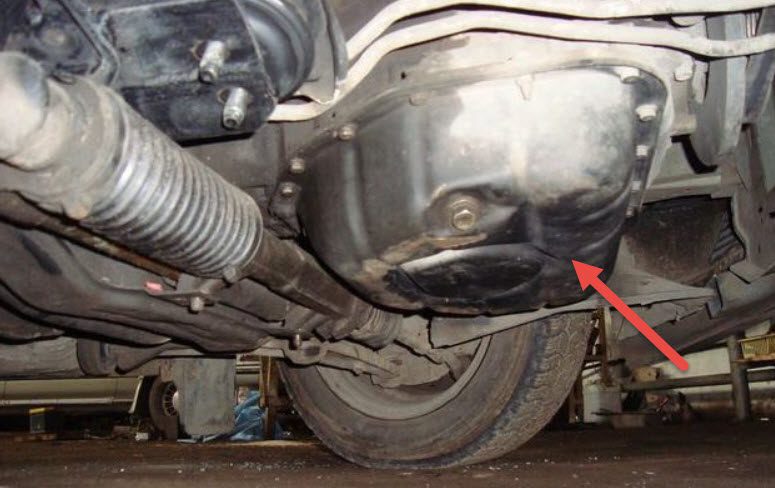
What is an engine crankcase in a car?
Content
- What is a car case?
- The story of
- Purpose and functions of the crankcase
- Crankcase design
- Crankcase device
- Carter Varieties
- Building types and material
- Features of a two-stroke crankcase
- Difference in two-stroke and four-stroke engines
- What is dry sump
- Crankcase malfunctions
- Maintenance, repair and replacement of crankcases
- Crankcase protection
- Common questions about crankcase protection
- Choice of crankcase protection
- Related videos
- Questions and answers:
An integral part of the internal combustion engine is the crankcase. Without this structural element of the power unit, its operation is impossible. From this review you will find out what purpose the engine crankcase has, what types of crankcases are, and how to service and repair them.
What is a car case?
The car engine crankcase is part of the motor housing. It is installed under the cylinder block. A crankshaft is installed between these housing elements. In addition to the engine, this element also has gearboxes, gearboxes, the rear axle and other parts of the car that need constant lubrication.
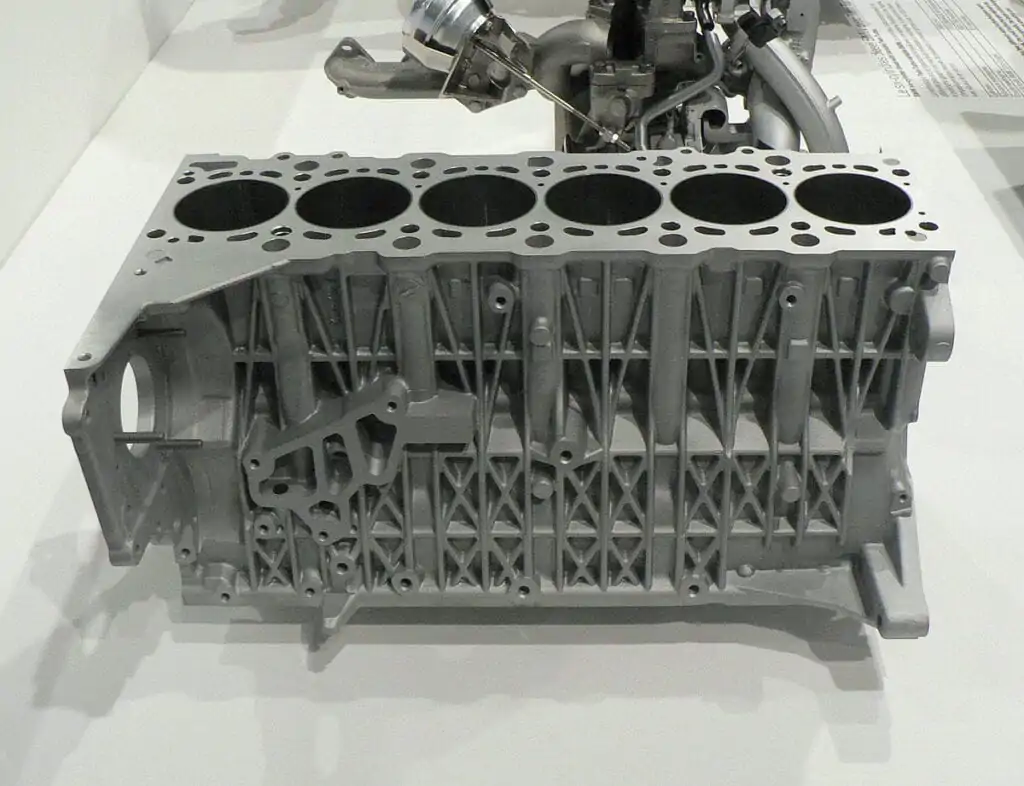
It is generally accepted that the crankcase is the reservoir in which the oil is located. As for the motor, then most often it is. As for the transmission crankcases, this is not only an oil pan, but the entire mechanism housing with all the necessary drain, fill and mounting holes. Depending on the purpose of the container, a special lubricant suitable for a particular unit is poured into it.
The story of
For the first time, the idea that this detail embodied appeared in 1889. Engineer H. Carter came up with a small reservoir that contained liquid lubricant for a bicycle chain.

Additionally, the part prevented foreign objects from getting between the sprocket teeth and the chain links. Gradually, this idea migrated to the automotive world.
Purpose and functions of the crankcase
The main objective of the crankcases is the fastening of movable mechanisms that need plentiful lubrication. In the crankcase there is a crankshaft, oil pump, balancing shafts (about which engines use such mechanisms and why they are needed, read in a separate article) and other important elements of the power unit.
All shafts and gears are located in the transmission sumps, which provide torque transmission from the engine flywheel to the drive wheels. These parts are constantly under load, so they also need plentiful lubrication.
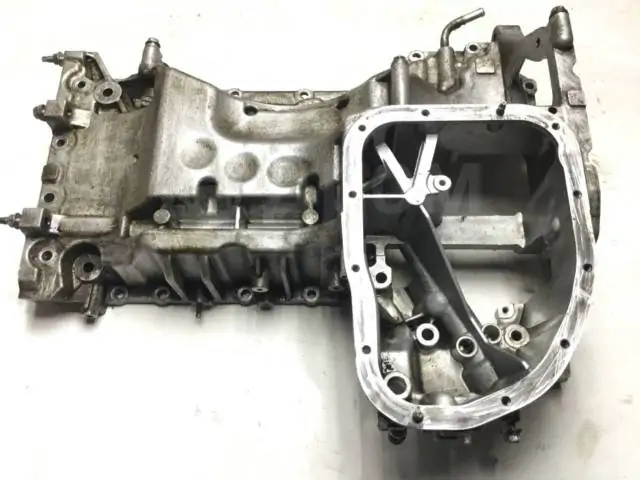
In addition to lubrication, the crankcase performs several other important functions:
- Unit cooling. As a result of the work of rotating parts, the contact surfaces become very hot. The temperature of the oil in the tank is also gradually increasing. So that it does not overheat and does not lose its properties, it must be cooled. This function is performed by the reservoir, which is constantly in contact with cool air. During the movement of the car, the flow increases, and the mechanism cools better.
- Protects unit parts. The crankcase of the engine and gearbox is made of durable metal. Due to this, even if the motorist is inattentive to the situation on the road, this part is able to protect the oil pump and the rotating shaft from deformation during impacts. Basically, it is made of iron, which deforms when struck, but does not burst (it all depends on the strength of the blow, so you should still be careful when driving over bumps).
- In the case of transmission crankcases, they allow you to install shafts and gears in one mechanism and fix it on the frame of the machine.
Crankcase design
Since the crankcase is part of the motor housing (or gearbox), its design depends on the characteristics of the units in which it is used.
The bottom of the item is called a pallet. It is mainly made of aluminum alloy or stamped steel. This allows him to withstand severe blows. An oil drain plug is installed at the lowest point. This is a small bolt that unscrews when changing oil and makes it possible to completely remove all grease from the engine. A similar device has a box case.
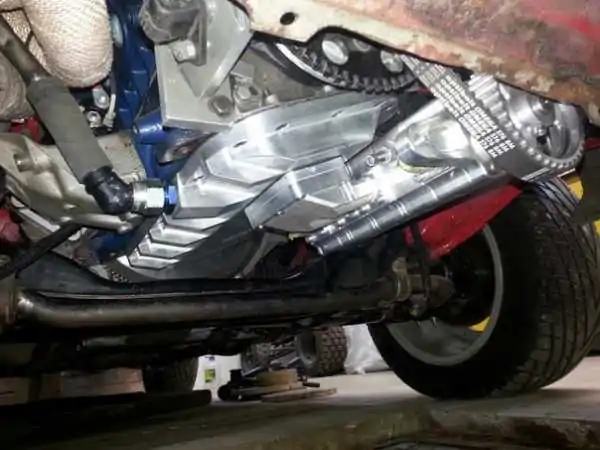
In order for the walls of the part to withstand increased loads during vibration of the motor, inside they are equipped with stiffeners. To prevent oil leakage from the lubrication system, sealing glands are installed on the shafts (the front oil seal is larger in size than the rear oil seal, and it often fails).
They provide a high-quality seal, even if high pressure forms in the cavity. These parts also prevent foreign particles from entering the mechanism. Bearings are fixed to the housing using special covers and bolts (or studs).
Crankcase device
Oil-conducting channels also enter the crankcase, thanks to which the grease flows into the sump, where it is cooled and subsequently sucked up by the pump. During the operation of the crank mechanism, small metal particles may enter the lubricant.
So that they do not damage the pump and do not get on the contact surfaces of the mechanism, magnets are installed on the pallet wall of some cars. In some modifications of the motors, there is additionally a metal drainage mesh that filters out large particles and prevents them from settling at the bottom of the pallet.
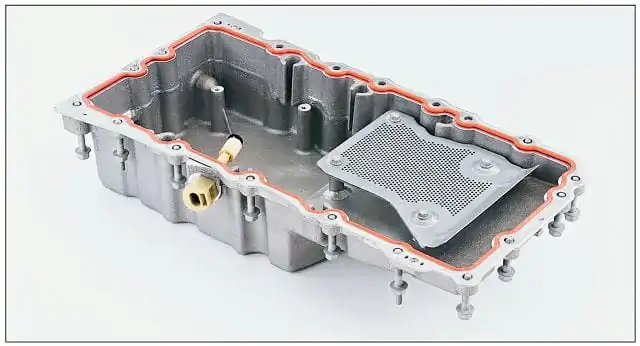
Additionally, the crankcase has ventilation. Oil vapor accumulates inside the housing, and some of the exhaust gases from the top of the motor get into it. A mixture of these gases has a negative effect on the quality of the oil, which is why it loses its lubricating properties. To remove crankcase gases in the cylinder head cover there is a thin tube that is connected to the carburetor or goes to the air filter.
Each manufacturer uses its own development to remove crankcase gases from the motor. On some cars in the lubrication system there are special separators that clean crankcase gases from oil aerosol. This prevents contamination of the ducts through which harmful gases are discharged.

Carter Varieties
To date, there are two varieties of crankcases:
- Classic wet sump. In it, the oil is in the pan. After lubrication, they drain down the drain, and from there they are sucked in by the oil pump.
- Dry sump. This modification is mainly used in sports cars and full-fledged SUVs. In such lubrication systems, there is an additional reservoir with oil, which is replenished by pumps. To prevent the grease from overheating, the system is equipped with an oil cooler.
Most cars use a regular crankcase. However, for two-stroke and four-stroke ICEs, their own crankcases have been developed.
Two-stroke engine crankcase
In this type of engine, the crankcase is used to pre-compress the air-fuel mixture. When the piston performs a compression stroke, the intake port opens (in modern two-stroke engines, intake valves are installed, but in older modifications, the port opens / closes by the piston itself as it moves through the cylinder), and a fresh portion of the mixture enters the under-piston space.
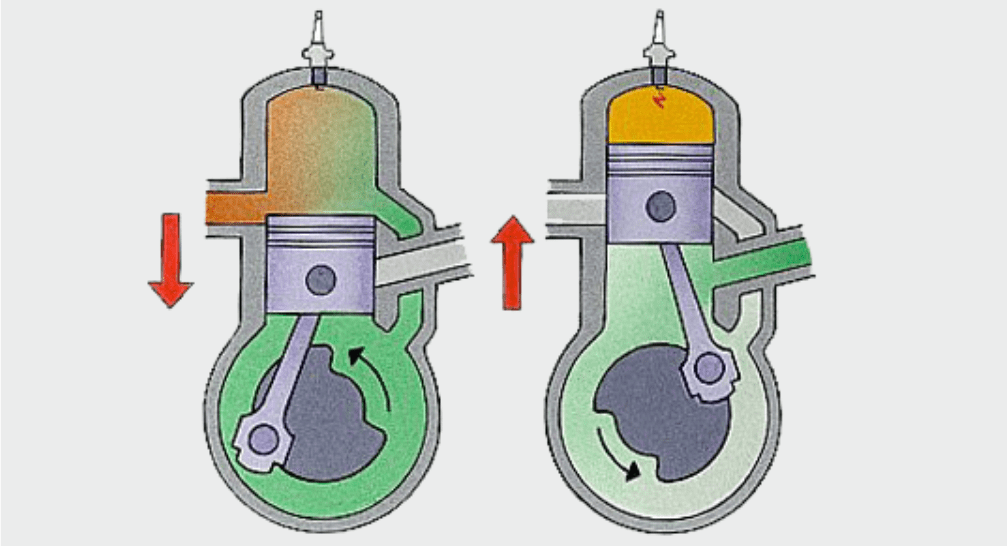
As the piston makes its stroke, it compresses the air/fuel mixture below it. Due to this, the mixture is supplied under pressure to the cylinder. In order for this process to occur without returning fuel to the fuel system, modern two-stroke engines are equipped with a bypass valve.
For this reason, the crankcase of such a motor must be sealed and an intake valve must be present in its design. There is no oil bath in this type of motor. All parts are lubricated by adding oil to the fuel. Therefore, two-stroke engines always need a constant replenishment of engine oil.
Four-stroke engine crankcase
Unlike the previous engine, in a four-stroke internal combustion engine, the crankcase is isolated from the fuel system. If fuel gets into the oil, this already indicates a malfunction of the power unit.
The primary job of the four-stroke crankcase is to conserve engine oil. After oil is supplied to all parts of the unit, it flows through the appropriate channels into a sump screwed to the crankcase (lower part of the cylinder block). Here, the oil is cleaned of metal chips and exfoliated deposits, if any, and is also cooled.
An oil intake for the engine lubrication system is installed at the lowest point of the sump. Through this element, the oil pump sucks in oil and, under pressure, supplies it again to all parts of the unit. So that the counterweights of the crankshaft do not foam the oil, a certain distance is maintained from its mirror to the lowest position of these parts.
Boxer crankcase
The boxer motor (or boxer) has a special design, and its crankcase is a key element on which the rigidity of the entire motor structure depends. Such motors are mainly installed in sports cars, because for such vehicles the key is the height of the body. Thanks to this, the center of gravity of the sports car is as close to the ground as possible, which increases the stability of a light car.
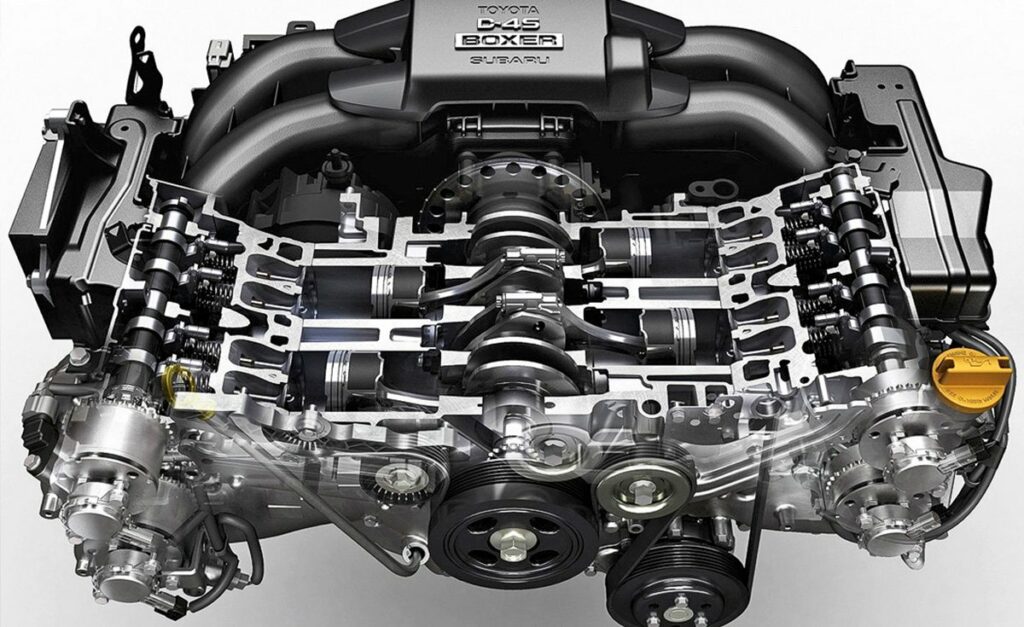
The oil in the boxer motor is also stored in a separate sump, and the pump supplies lubricant to all parts of the unit through the crankcase channels.
Building types and material
The crankcase is made from the same material as the cylinder block. Since this part is also subject to thermal and mechanical stress, it is made of metal. In modern transport it is an aluminum alloy. Previously, cast iron was used.
In many car models, the oil pan is called the crankcase. But there are modifications that are part of the cylinder block housing. Many crankcases use stiffeners to help the part withstand impacts from below.
Features of a two-stroke crankcase
In a four-stroke engine, the crankcase is only involved in engine lubrication. In such modifications, the oil does not penetrate into the working chamber of the internal combustion engine, making the exhaust much cleaner than two-stroke engines. The exhaust system of such power units will be equipped with a catalytic converter.
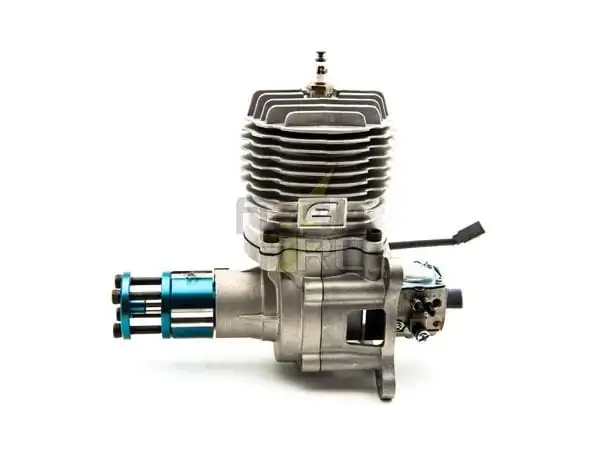
The device of two-stroke engines differs from the previous modification. In them, the crankcase plays a direct role in the preparation and supply of the fuel-air mixture. Such motors do not have a separate oil pan at all. In this case, the lubricant is added directly to gasoline. From this, many elements of a two-stroke ICE more often fail. For example, they often need to change candles.
Difference in two-stroke and four-stroke engines
To understand the difference between crankcases in two-stroke and four-stroke engines, you need to remember the differences between the units themselves.
In a two-stroke internal combustion engine, a part of the body plays the role of an element of the fuel system. Inside it, air is mixed with fuel and fed into the cylinders. In such a unit, there is no separate crankcase, which would have a sump with oil. Engine oil is added to the fuel to provide lubrication.

There are more parts in a four-stroke engine that need lubrication. Moreover, most of them do not come into contact with fuel. For this reason, more grease must be supplied.
What is dry sump
Regarding dry sumps, a separate article can be distinguished. But, in short, the feature of their device is the presence of an additional reservoir for oil. Depending on the model of the car, it is installed in different parts of the engine compartment. Most often, it is close to the motor or directly on it, only in a separate container.
This modification also has a sump, only the oil is not stored in it, but is immediately pumped into the tank by a pump. This system is needed, since in high-speed motors the oil often foams (the crank mechanism in this case plays the role of a mixer).
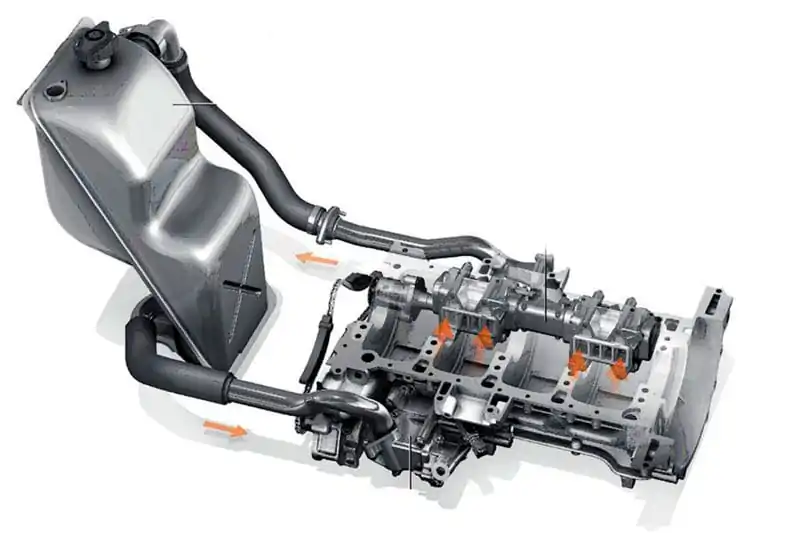
Off-road vehicles often conquer long passes. At a large angle, the oil in the sump moves to the side and exposes the suction pipe of the pump, because of which the motor may experience oil starvation.
To prevent this problem, the dry sump system delivers lubricant from a container located on top of the engine.
Crankcase malfunctions
Since the crankcase is not directly involved in the rotation of the crankshaft or the operation of other engine parts, this element of the internal combustion engine design has the longest working life. There can be only two malfunctions in the crankcase:
- Pallet breakdown. The reason is that the oil in the engine drains under the influence of gravity. Therefore, the oil pan is at the lowest point of the internal combustion engine. If the car is driving on rough roads, and its ground clearance is very low for such roads, then there is a high probability that the pallet will hit a bump on the road. It can be just a mound on the dirt road, a large stone, or a deep hole with sharp edges. If the sump is damaged, the oil will gradually leak onto the road. If the car is equipped with a dry sump, then in case of a strong blow, it is necessary to turn off the engine and try to repair the hole. In models with a classic crankcase, all the oil will leak out. Therefore, in case of damage, it is necessary to substitute a clean container under the machine, especially if the oil has just been changed.
- Worn crankcase gasket. Due to leakage, the motor may slowly lose oil due to smudges. In each car, the need to replace the gasket occurs after a different period of time. Therefore, the car owner must independently monitor the appearance of a leak and replace the seal in a timely manner.
Maintenance, repair and replacement of crankcases
Damage to the crankcase is extremely rare. Most often his pallet suffers. When a car overcomes serious mounds, it can hit hard underneath a sharp stone. In the case of a pan, this will necessarily lead to an oil leak.
If the driver does not pay attention to the consequences of the blow, then due to oil starvation, the motor will experience an increased load and, ultimately, will break. If a crack has formed in the pan, then you can try to brew it. Steel is repaired by ordinary electric or gas, and aluminum only by argon welding. Often in stores you can find special sealants for pallets, but they are effective until the next blow.
Replacing a pallet is not such a difficult task. To do this, drain the old oil (if it did not run out through the hole), unscrew the mounting bolts and install a new sump. Along with the new part, the gasket should also be replaced.
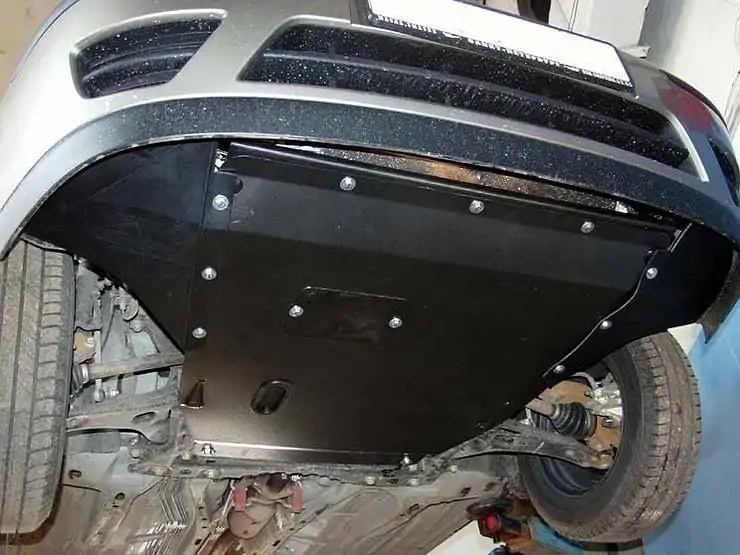
To minimize the chances of breaking through the oil pan, it is worth using a steel plate protection. It is attached to the side members under the car. Before you buy such protection, you should pay attention to the slots in it. Some modifications have corresponding openings that allow changing the oil in the engine or in the box without removing the protection.
Typical breakdowns
Since the crankcase performs a protective and supporting function, there is nothing to break in it. The main failures of this part of the motor include:
- Mechanical damage due to impacts when driving over bumps. The reason for this is the location of this element. It is located very close to the ground, so there is a high probability that it will catch on a sharp stone if the car has a small clearance (for more details about this parameter of the car, see in another review);
- Breakage of the thread of the fastening pins due to an incorrect tightening torque;
- Wear of gasket materials.
Regardless of the type of crankcase damage, this will cause the vehicle to lose powertrain lubricant. When the motor experiences oil starvation or loses too much lubricant, it will certainly lead to serious damage.
To avoid breaking the thread of the mounting stud, the motor should be repaired by a professional who has the appropriate tool. Elimination of leaks through the gasket is carried out by replacing this element with a new one.
Crankcase protection
When driving on dirt roads or bumps, there is a risk of hitting a sharp object sticking out of the ground (such as a stone). Often the blow falls on the oil pan. In order not to lose fluid, vital for the engine, the driver can install a special crankcase protection.
In fact, not only the oil pan needs protection from serious blows, but also other engine parts. In order for the lower part of the engine compartment to be reliably protected, the crankcase protection must be made of durable metal that does not deform under heavy loads.
The protective element can be made of ferrous metal, aluminum or composite materials. The cheapest models are steel, but they are heavier than their aluminum counterparts.
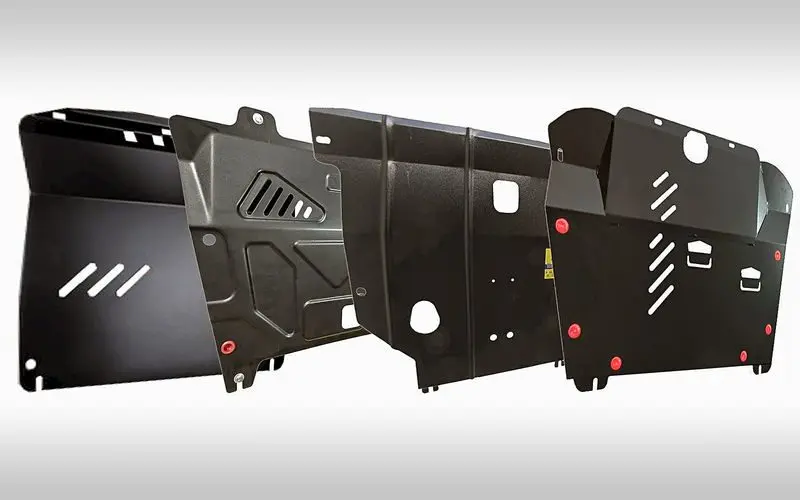
So that the part does not deteriorate over time due to rust, it is covered with a special protective agent. Technical holes are also made in the design of the part. Through them, the master can carry out some repairs to the engine compartment (for example, to change the oil filter in some cars), but their main purpose is to provide the necessary ventilation of the compartment.
The protection is mounted using bolts in holes specially made for fastening. If the motorist has purchased a model designed for this car, then the installation will not take much time.
As you can see, most parts in the car need careful handling and timely maintenance. In the case of the crankcase, do not skimp and acquire suitable protection. This will extend the life of this item.
Common questions about crankcase protection
To protect the sump of a car, car manufacturers have developed various options for protecting the crankcase, which is installed so that it is located between the crankcase and the road surface.
Here are some common questions about installing this kind of protection in a car:
| Question: | Answer: |
| Will the motor get hotter? | Not. Because when the car is driving, the air flow comes from the air intakes located in the front bumper and also through the radiator grill. The motor is cooled in the longitudinal direction. When the car is stationary with the power unit running, a fan is used to cool it (this device is described in another article). In winter, the protection will be an additional element that prevents the rapid cooling of the internal combustion engine. |
| Are there any unpleasant noises coming from stones or other solid objects? | Yes. But this rarely happens if the machine is operated in an urban environment. To reduce the noise from falling objects, it is enough to use noise isolation. |
| Will it be difficult to carry out routine maintenance? | Not. Most of the underbody protection models have all the necessary technical openings that allow a visual inspection of the car from the pit, as well as for many standard procedures, for example, changing the oil and filter. Some models have plastic plugs in the appropriate places. |
| Is the protection difficult to install and remove? | Not. To do this, you will not need to carry out any preparatory work (for example, drilling additional holes in the machine). When purchasing a protective bottom, the kit will include the necessary fasteners. |
Choice of crankcase protection
Regardless of the type of vehicle, either metal or composite pallet protection can be purchased for it. When it comes to metal options, there are aluminum or steel options in this category. The composite analogue is only gaining popularity, so it is not always possible to purchase it on the market, and the price of such a product will be higher.

Composite skids can be made of carbon or fiberglass. Such products have the following advantages over metal versions:
- Lightweight;
- Does not corrode;
- Does not wear out;
- Has high strength;
- During an accident, it does not pose an additional threat;
- Has sound absorption.
Aluminum models will cost much cheaper, and steel options will be the cheapest. Aluminum has good rigidity and impact resistance, and the weight is slightly lower than steel modifications. As for the steel analogue, in addition to its greater weight and susceptibility to corrosion, this product has all the other advantages.
The choice of crankcase protection is influenced by the conditions in which the machine will be used. If this is a vehicle for frequent off-road driving, then it would be more practical to buy steel protection. For a sports car participating in track races, it is better to opt for the composite version, since it weighs less, which is extremely important for sports transport.
Equipping an ordinary car with such protection is not economically viable. The main factor that needs to be paid attention to when choosing protection is its rigidity. If the bottom is easily deformed, then over time it will not protect the pallet from mechanical damage due to strong impacts.
Here is an example of how a steel guard is installed on a car:
Related videos
In addition, we suggest watching a detailed video about the dry sump:


Watch this video on YouTube
Questions and answers:
What is a crankcase? This is the main body part of the power unit. It has a box-like structure, and is designed to protect and support the working parts of the internal combustion engine. Through the channels made in this part of the motor, engine oil is supplied to lubricate all the mechanisms that make up the engine design. Some drivers call the crankcase the sump into which the engine oil drains and is stored. In two-stroke engines, the crankcase design ensures the correct timing.
Where is the crankcase located? This is the main body of the power unit. A crankshaft (below) is installed in its cavity. The top of the crankcase is called the cylinder block. If the engine is oversized, then this element is one piece with the cylinder block, made by a single casting. Such a part is called a crankcase. In larger engines, this shape is difficult to make in a single casting, so the crankcase and cylinder block are separate parts of the internal combustion engine body. If by the crankcase the motorist means its pallet, then this part is located at the very bottom of the engine. this is the convex part in which the oil is located (in some machines, this part is pumped out of the oil into a separate reservoir, and therefore the system is called "dry sump").

